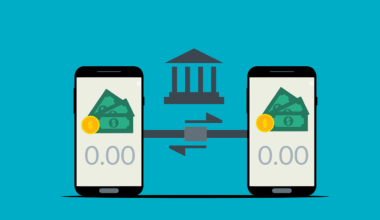Leveraging Social Media Analytics to Enhance Content Scheduling
Social media analytics plays a crucial role in enhancing content scheduling. By analyzing data, businesses can identify the optimal times for posting, which directly influences engagement rates. A well-planned content schedule, driven by analytics, can lead to increased visibility. Successful content strategies rely heavily on timely posting, as different platforms cater to different user behavior. For example, Twitter may require more frequent posts than Facebook, based on user activity patterns. Furthermore, understanding the audience’s preferences shapes content types and topics, tailoring them for maximum impact. Companies can utilize tools that aggregate and analyze performance data across multiple networks, helping to fine-tune their strategies. The goal is to ensure that your content reaches your audience when they are most active. Emphasizing engagement metrics allows businesses to make informed decisions about future content. This analytical approach leads to a more robust content strategy, fostering deeper connections with the audience. The outcome? Increased customer loyalty and advocacy. Marketers can optimize their posting schedule, engage audiences meaningfully, and achieve significant results through intelligent use of this analytical strategy.
Content scheduling analytics not only focuses on posting frequency but also on testing and optimizing. A/B testing of different time slots can provide valuable insights into when audiences are most receptive. Marketers create content calendars with agility to adapt to real-time analytics. Implementing social listening tools helps capture audience reactions to posted content, enabling marketers to understand sentiment in relation to timing. An effective content schedule accommodates changes in audience behavior or societal trends, empowering brands to remain relevant. Incorporating seasonal content strategies enhances connection with the audience. Increasing Brand Visibility relies on being present during key events or conversations in the market. By leveraging analytics, brands can identify opportunities that align well with audience interests, ensuring timely and relevant content. Furthermore, user engagement can be significantly improved with geo-targeting strategies that cater to specific regions. Understanding local trends allows for personalization of the content, thus making it more appealing. Brands can emerge as thought leaders by delivering timely, relevant content that aligns with audience expectations. Thus, effective content scheduling analytics supports not just engagement, but a sustained, meaningful relationship with followers.
The Importance of Timing in Social Media Posts
Timing is a crucial factor that influences the effectiveness of social media posts. High engagement rates are often observed when content is shared during peak activity hours, which can vary significantly across platforms. Analytical tools enable businesses to discern these peak hours, providing data-driven insights into user behavior. Factors such as weekdays versus weekends and specific hours during the day can dramatically impact engagement levels. For instance, posts shared on Friday afternoons may receive a different level of interaction compared to those shared on Monday mornings. Additionally, cultural and local events often influence when audiences are most receptive. Brands can leverage this knowledge by planning content around such events. By doing so, they not only maximize engagement rates but also enhance the relativity of their content. Understanding and utilizing timing within social media naturally facilitates higher visibility, leading to increased shares and impressions. Furthermore, analyzing past performance data helps predict future engagement trends. Overall, mastering the timing aspect transforms how brands approach their social media strategies, allowing for enhanced content scheduling and improved overall performance.
Furthermore, understanding your audience’s demographics is integral to optimizing content scheduling. Various demographic factors, including age, location, and interests, contribute to when specific groups engage most with social media content. By segmenting audiences based on these factors, businesses can tailor their content schedules to meet the needs of diverse groups. For example, younger audiences may be more active at night while professionals may check social media during lunchtime. Consequently, a well-rounded content strategy incorporates varying schedules to cater to these demographics. Involving advanced analytics tools can further streamline this process, providing insights into audience activity patterns over time. Segmenting audiences helps marketers develop targeted content that resonates more personally, fostering deeper relationships. Regularly updating these strategies based on shifts in audience behavior guarantees that brands stay responsive. Overall, the integration of demographic insights with content scheduling analytics creates a more profound understanding of audience needs. Brands are encouraged to continually adjust their approaches, ensuring that they deliver relevant content at the perfect time. Visibility and interaction surge, effectively transforming social media campaigns into significant growth opportunities.
Integrating Tools for Enhanced Content Strategies
Several tools on the market can enhance social media content scheduling analytics. Platforms like Hootsuite and Buffer offer capabilities to schedule posts across multiple channels simultaneously. These tools don’t just automate posting but also provide valuable analytics on engagement rates and audience demographics. By utilizing these insights, marketers can refine their content strategy further, ensuring it aligns with both audience preferences and optimal posting times. Furthermore, analytics platforms, such as Sprout Social, offer in-depth reporting and insights that predict audience engagement trends. Businesses can pinpoint which content types resonate well among different demographics, optimizing future posts accordingly. Integration of content planning and scheduling tools supports a unified approach to social media strategy. As brands harness these tools, they become more agile in responding to audience needs in real time. Additionally, these resources aid in creating consistent branding across platforms, which is vital for audience recognition. When using various analytics tools, brands must focus on finding the best mix that suits their unique needs and goals, ultimately elevating their social media efforts. Thus, analytics tools play an indispensable role in evolving effective content strategies.
Engagement metrics also play a pivotal role in shaping future content schedules. Metrics such as likes, shares, and comments reveal the effectiveness of various posts, guiding marketers on what content to produce more of. A thorough analysis of this data can uncover patterns that guide content scheduling decisions. For instance, if videos garner more engagement than images, brands can prioritize video content primarily during peak times identified by analytics. Tracking audience responses toward different formats facilitates tailor-made content that resonates well with followers. This data-driven approach empowers brands to focus on quality over quantity, leading to more meaningful interactions. Furthermore, understanding engagement trends influences promotional strategies, allowing businesses to decide when to launch new campaigns or products effectively. Addressing these insights helps businesses prepare for campaigns that align better with audience behavior. Consequently, this cycle of feedback and adjustment enhances overall performance on social platforms. Therefore, cultivating responsive content that adapts to audience engagement metrics is essential in establishing a robust social media presence. Such strategies ultimately lead to improved loyalty and increased brand advocacy among consumers.
Evaluating Success of Content Scheduling Strategies
Regular evaluation of content scheduling strategies is vital for sustained success. Analyze engagement metrics over time to identify what works and what does not. Performance reviews can highlight trends and shifts in audience behavior that may impact future scheduling. Conducting regular audits enables brands to stay relevant and responsive to their audiences. By assessing each post’s performance, marketers can make necessary adjustments, optimizing their future content strategies. Feedback from audience engagement creates a more informed decision-making process. It also helps businesses pick up on evolving interests and preferences. Incorporating these insights into future creative processes is fundamental for maintaining effective social media presence. Always keep testing new strategies, creative formats, and posting times to discover potential opportunities for improvement. Experimentation should be welcomed, and brands should not shy away from evolving their approaches. Consistent refinements lead to more compelling content that appeals to audiences meaningfully. In summary, the ongoing evaluation of content scheduling enhances marketers’ ability to create impactful social media strategies. Over time, these strategies can maximize engagement and optimize overall performance, ensuring success in a competitive landscape.
The conclusion underscores the impactful role social media analytics plays in content scheduling. By leveraging data insights, brands can create more effective schedules that resonate with their audience’s needs. Content strategies should never be static; continuous monitoring and adjustments are paramount. Investing in the right analytics tools is paramount; they are invaluable assets for brands aiming to thrive in the social media landscape. Enhanced engagement leads to measurable results, driving businesses towards their goals. Marketers are encouraged to use all available metrics to make informed decisions, ensuring their strategies effectively engage audiences. The importance of timing, the integration of analytics, the audience’s demographics, and the continuous evaluation of strategies significantly contribute to overall success. Creating a dynamic social media presence requires agility and responsiveness to the shifting patterns of consumer behavior. Brands that adeptly use these principles will not only capture audience attention but build lasting relationships, turning followers into advocates. Thus, the fusion of social media analytics and content scheduling forms a powerful toolkit for digital marketing. Embracing this approach guarantees that brands remain at the forefront of effective content strategy development. The journey towards mastering these strategies ensures lasting relevance and success.


